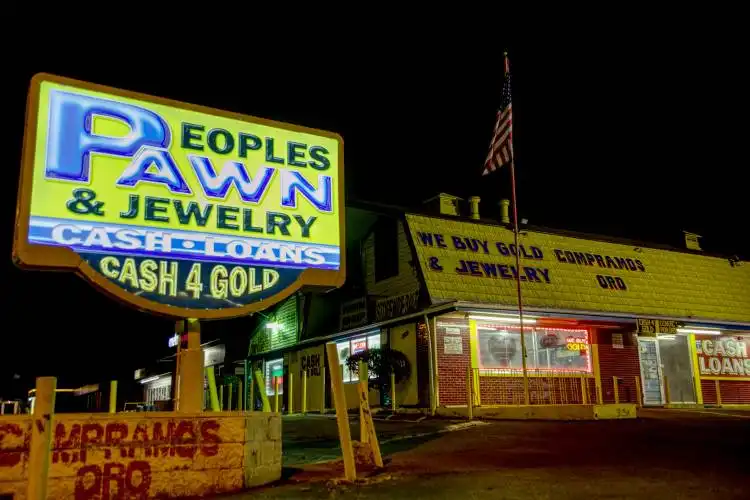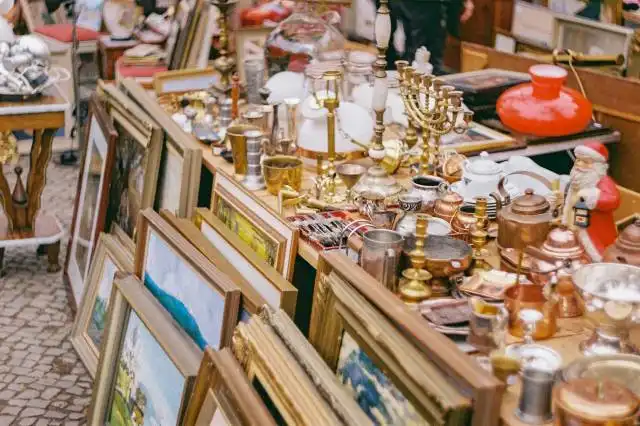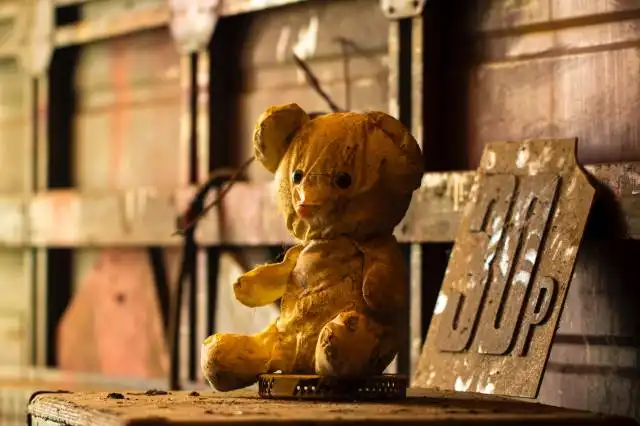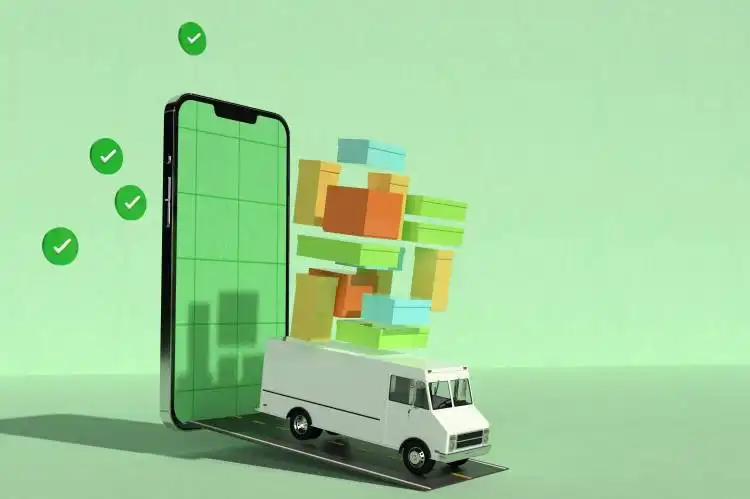Start a Flea Market
Becoming the Time-traveling Curator of Rare Finds
| Updated


FLEA MARKET
A flea market business is like a magical treasure hunt! You are the ultimate gatekeeper to a kingdom of unique, vintage, and peculiar items that people can't find in mainstream stores. Your little, vibrant corner will be the junction where old school charm meets eager shoppers looking for offbeat items. To put it simply, a flea market business offers a broad variety of second-hand goods and various collectibles, making each purchase a whimsical journey into the past.
Jump to Business Plan
RELATED BUSINESS IDEAS
Browse ALL Retail & Shopping Business Ideas
Discover Your Perfect Domain
Unlock the door to your online success with our hand-picked selection of premium domain names. Whether you're starting a new venture or rebranding an existing one, the right domain can set the tone for your digital presence. Browse through our curated list, each with its unique potential to enhance your brand's visibility and credibility.
FLEA MARKET MINI BUSINESS PLAN
This a quick reality check to help you identify the strengths and weaknesses of your business concept before you dive in.
Business Idea: Flea Market
Expected Percent Margin:
- Gross Margin: 20-30% (Varies greatly due to the wide range of goods sold)
- Net Profit Margin: 10-15%
Earnings Expectations:
- Daily Earnings: $100 - $300 (depends on location, day, weather and goods)
- Weekly Earnings (Assuming operating 2 days a week): $200 - $600
- Monthly Earnings (Average 8 days of operation per month): $800 - $2400
- Annual Earnings (Based on 96 operational days): $9,600 - $28,800
Actions Needed to Achieve Those Numbers:
Stall Rentals:
- Stalls: Create a varied number of stalls to cater to different merchant needs. (10-50 stalls)
- Merchant Network: Develop relationships with local merchants; offer incentives for long-term leasing.
Marketing and Visitor Acquisition:
- Local Advertisement: Collaborate with local businesses or advertise in local newspapers for wider reach.
- Social Media: Regularly post engaging content featuring stall owner’s goods. Leverage user generated content.
Visitor Experience:
- Location and Environment: Choose a high footfall location; provide clean, safe and navigable environment.
- Facilities: Providing necessary facilities like parking and toilets.
Cost Control:
- Operational Cost: Keep the operational cost low; focus on reducing waste and efficient use of resources like electricity and water.
Business Operations:
- Operation Days: Understand the market and choose the best days for operation, usually weekends.
- Safety Regulations: Follow local health and safety regulations to avoid penalties.
Please note that these are approximate figures and actual results can vary based on a multitude of factors. Always make sure to do your homework and consult with a business advisor before starting your venture.
NOT WHAT YOU HAD IN MIND? Here are more ideas



Browse ALL Retail & Shopping Business Ideas
Grab Your Business Website Name
Before you get caught up in the whirlwind of setting up your business, invest in a domain name. It's a small but significant step that lays the foundation for your brand and makes it easier for customers to find and trust you. Just like you wouldn't build a house without securing the land first, don't build a business without securing your domain name.
"Why? Can't that wait?" Here's why it shouldn't
Step 1: Determine if Starting a Flea Market is Right for You
Breakdown of Startup Expenses
Before starting a flea market, it is important to consider the costs associated with starting a business. These costs can include the cost of renting a space, purchasing supplies, and advertising. It is important to research the costs associated with each of these items so that you can determine if starting a flea market is right for you. Additionally, it is important to consider the costs associated with obtaining any necessary permits or licenses.
Breakdown of Ongoing Expenses
In addition to the startup expenses, it is important to consider the ongoing expenses associated with running a flea market. These costs can include the cost of renting the space, purchasing supplies, and advertising. Additionally, it is important to consider the cost of paying employees, if any, and the cost of any necessary permits or licenses.
Examples of Ways to Make Money
Once you have determined the costs associated with starting and running a flea market, it is important to consider the ways in which you can make money. One way to make money is to charge vendors a fee to rent a space at the flea market. Additionally, you can make money by charging admission fees to customers. You can also make money by selling food and drinks at the flea market. Finally, you can make money by selling items that you have purchased or made yourself.
Step 2: Name Your Business
Brainstorm The first step in naming your business is to brainstorm. Think of words that relate to the flea market and its purpose. Consider words that evoke a feeling or emotion, and words that are easy to remember. Make a list of potential names and then narrow it down to the ones you like best.
Research Once you have a list of potential names, it’s time to do some research. Check to make sure the name is not already taken by another business. You can do this by searching online and checking with the local government.
Consider Your Target Audience When choosing a name, consider your target audience. Think about what kind of people will be shopping at your flea market and what kind of name will appeal to them.
Keep it Simple When it comes to naming your business, less is more. Choose a name that is easy to spell and pronounce. Avoid complicated words or phrases that may be difficult to remember.
Get Feedback Once you have narrowed down your list of potential names, get feedback from friends, family, and other business owners. Ask them what they think of the names and if they have any suggestions.
Step 3: Secure a Location
- Visibility When choosing a location for a flea market, visibility is key. The more visible the location, the more likely it is that customers will find the flea market. Consider the amount of foot traffic in the area, as well as the visibility of the location from the street.
- Cost The cost of renting or leasing a space for a flea market should also be taken into consideration. Consider the cost of the space, as well as any additional fees that may be associated with the space. Additionally, consider any additional costs that may be associated with the space, such as utilities or insurance.
- Regulations Before securing a location, it is important to research the local regulations and laws that may apply to the flea market. This includes zoning laws, licensing requirements, and any other regulations that may apply. Additionally, research any permits that may be required to operate a flea market in the area.
- Amenities When choosing a location for a flea market, consider the amenities that may be available. This includes parking, restrooms, and other amenities that may be necessary for the operation of the flea market. Additionally, consider any additional amenities that may be beneficial, such as a food court or other attractions.
- Accessibility When choosing a location for a flea market, consider the accessibility of the location. This includes the ease of access for customers, as well as the ease of access for vendors. Additionally, consider the accessibility of the location for deliveries and other necessary services.
Step 4: Obtain Necessary Licenses and Permits
Before you can open your flea market, you must obtain the necessary licenses and permits. Depending on the state and local regulations, you may need to obtain a business license, a sales tax permit, a zoning permit, a health permit, and a fire safety permit. Additionally, you may need to obtain a special permit to sell food or alcohol. It is important to research the regulations in your area to determine which licenses and permits you need.
Applying for Licenses and Permits
Once you have identified the licenses and permits that you need, you can begin the application process. Most applications can be completed online, but you may need to submit additional paperwork or visit a local government office. You may also need to pay a fee to obtain the necessary licenses and permits. It is important to apply for the licenses and permits as soon as possible, as the process can take several weeks.
Keeping Licenses and Permits Up to Date
Once you have obtained the necessary licenses and permits, you must keep them up to date. This may involve renewing the licenses and permits every year or every few years. Additionally, you may need to update the licenses and permits if you make any changes to your business, such as adding new products or services. It is important to keep track of when the licenses and permits need to be renewed or updated to ensure that your business remains in compliance with the regulations.
Step 5: Create a Business Plan
Creating a business plan is essential to starting a successful flea market. This plan should include your goals for the business, such as how much money you want to make, how many vendors you want to have, and how many customers you want to attract. It should also include a timeline for when you want to achieve these goals. Additionally, it should include a budget for how much money you will need to start the business and how much money you will need to keep it running.
Researching Your Market
Before you create a business plan, you should do some research into the flea market industry. This includes researching the local market, the competition, and the types of products that are popular in the area. You should also research the regulations and laws that apply to flea markets in your area. This will help you create a plan that is tailored to your specific market and that meets all the necessary regulations.
Writing a Business Plan
Once you have done your research, you can begin to write your business plan. This plan should include an executive summary, a description of the business, a market analysis, a financial plan, and a marketing plan. It should also include a timeline for when you plan to reach your goals. Writing a business plan can be a daunting task, but it is essential to the success of your business.
Seeking Professional Help
If you are not comfortable writing a business plan, you can seek professional help. There are many resources available, such as business consultants, financial advisors, and business plan writers. These professionals can help you create a comprehensive business plan that meets all the necessary requirements. Additionally, they can provide advice and guidance on how to best manage your business.
Step 6: Market Your Business
Introduction: Before you can start to market your flea market business, you need to develop a marketing strategy. This strategy should include a plan for how you will reach potential customers, what types of promotions you will use, and how you will measure the success of your marketing efforts.
Identifying Your Target Market: The first step in developing a marketing strategy is to identify your target market. Who are the people most likely to shop at your flea market? Are they local residents or tourists? Are they looking for antiques or vintage items? Knowing your target market will help you determine the best way to reach them.
Developing a Promotional Plan: Once you have identified your target market, you can begin to develop a promotional plan. This plan should include a mix of traditional and digital marketing tactics. Traditional tactics might include advertising in local newspapers or magazines, distributing flyers, or setting up a booth at local events. Digital tactics might include creating a website, running social media campaigns, or using email marketing.
Measuring Your Results: Finally, you need to measure the success of your marketing efforts. This can be done by tracking the number of people who visit your flea market, the number of sales you make, and the amount of money you make from each sale. You can also track how many people are engaging with your digital marketing campaigns, such as how many people are visiting your website or following your social media accounts.
Conclusion: Developing a marketing strategy for your flea market business is an important step in ensuring its success. By identifying your target market and developing a promotional plan, you can reach potential customers and measure the success of your efforts. With the right marketing strategy in place, you can ensure that your flea market is a success.
Step 7: Set Up Your Flea Market
Choosing Vendors
When setting up your flea market, it is important to choose vendors that will bring in the most customers and have the best products. Consider the type of products you want to sell and the type of customers you want to attract. You should also consider the cost of the vendors and the amount of space they will need. Make sure to research the vendors and read reviews before making your final decision.
Setting Up Your Space
Once you have chosen your vendors, it is time to set up your space. Make sure to plan out the layout of your flea market and how you want to arrange the vendors. Consider the size of the space and the amount of space each vendor will need. You should also consider the lighting and the type of furniture you will need. Make sure to have enough tables and chairs for customers to sit and browse. Additionally, make sure to have a designated area for customers to pay for their purchases.
Step 8: Manage Your Flea Market
Once you have your flea market up and running, it is important to establish rules and regulations that will ensure the safety and satisfaction of both vendors and customers. This may include rules about noise levels, cleanliness, and the types of items that can be sold. It is also important to have a system in place for resolving disputes between vendors and customers.
Hiring Employees
Depending on the size of your flea market, you may need to hire employees to help manage the day-to-day operations. This may include hiring security personnel to ensure the safety of vendors and customers, as well as cashiers to handle transactions. It is important to ensure that all employees are properly trained and have a clear understanding of the rules and regulations of the flea market.
Advertising
In order to attract customers to your flea market, it is important to advertise. This can be done through traditional methods such as radio and newspaper ads, as well as through online methods such as social media and email campaigns. It is also important to reach out to local businesses and organizations to let them know about your flea market and the services you offer.
Providing Customer Service
Providing excellent customer service is essential for the success of any business, and a flea market is no exception. It is important to ensure that customers have a positive experience when visiting your flea market. This may include providing helpful advice and assistance to customers, as well as resolving any disputes that may arise. It is also important to ensure that vendors are treated fairly and that their needs are met.
Staying Up to Date
Finally, it is important to stay up to date with the latest trends and technologies in order to ensure the success of your flea market. This may include researching new products and services that may be of interest to customers, as well as staying informed about any changes in the industry. It is also important to keep up with the competition and to make sure that your flea market is offering the best possible services and prices.
Step 9: Grow Your Business
- Consider adding additional services or products to your flea market. Adding additional services or products to your flea market can help you increase your profits and draw more customers. Consider adding services such as food stands, entertainment, or even a petting zoo. You could also consider adding products such as antiques, vintage items, or handmade crafts. Adding these items can help you stand out from other flea markets and draw more customers.
- Advertise your business. Advertising your business is a great way to get the word out about your flea market and draw more customers. You can advertise your business through flyers, word of mouth, or social media. You can also consider partnering with local businesses to help promote your flea market.
- Consider hosting special events. Hosting special events can help draw more customers to your flea market. Consider hosting events such as a flea market festival, a flea market night, or even a flea market scavenger hunt. These events can help you draw more customers and increase your profits.
- Develop relationships with vendors. Developing relationships with vendors is a great way to ensure that your flea market is successful. You should strive to build strong relationships with vendors by providing them with the best customer service and helping them promote their products. You should also consider offering incentives such as discounts or free items to help attract more vendors.
- Consider offering online sales. Offering online sales can help you reach a wider audience and increase your profits. You can use online platforms such as eBay or Etsy to list your items and attract more customers. You can also consider setting up a website or a social media page to promote your flea market and increase your visibility.
EXPLORE MORE CATEGORIES
Browse ALL Business Idea Categories
TAKE THE NEXT STEPS










